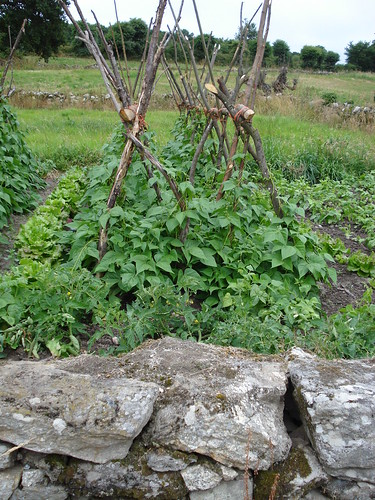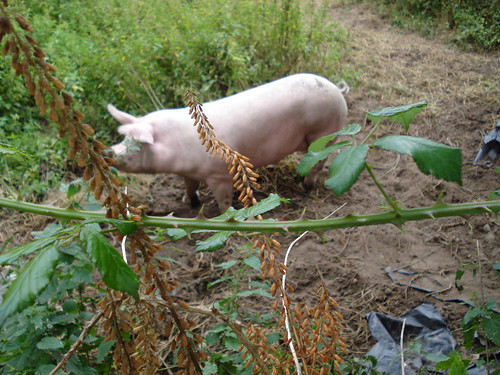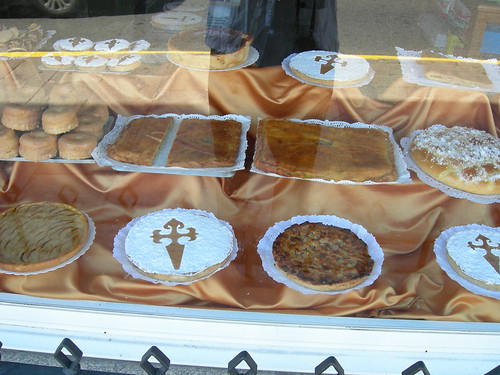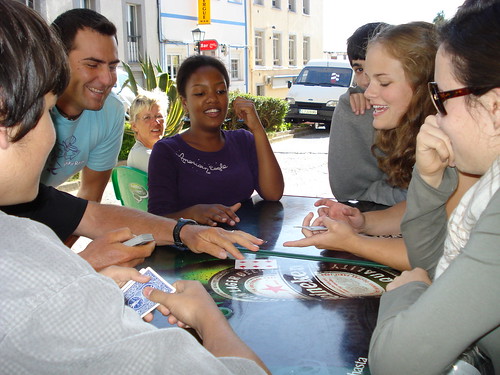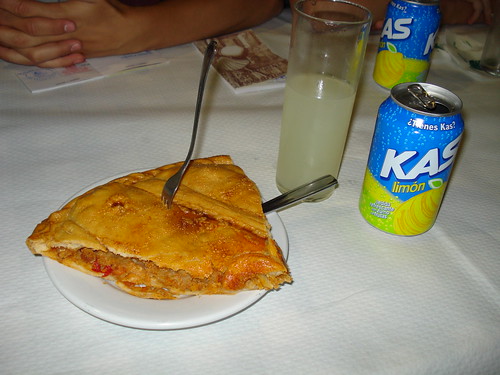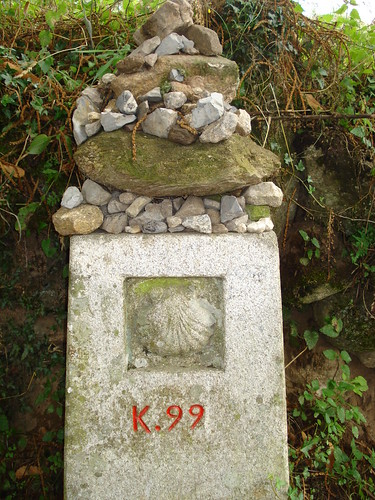My Family's Potato SoupSo, that's the soup. It's from Dad's side of the family -- I know Grandma made it (that's her in the picture, on the right), but I don't know if her mom made it. Dad's first time trying to make it went...adventurously, as he used condensed milk instead of evaporated. Sweetened condensed milk. It was vile. Momma makes it (she's on the left of the picture), I make it, Kelly makes it (she's the cutie with the doll in the middle). We've the sense and family knowledge to know that sweetened condensed milk is no the way to go.
Take your sauce pan or soup pot, and put it on the stove. Cut up a package of bacon and frizzle up the pieces in the pot. Cook until just this side of crispy (unless Kelly is going to be at dinner, in which case, cook until well and truly dead on the crispy side, and then you'd best be cooking more than one package, too), and remove to a plate lined with paper towels. Drain off fat. Remember that Dad had a crock of bacon fat in the fridge, and wish you had one, too. Remember that you only ever cook with bacon fat when you are also cooking bacon, so you don't need to store bacon fat up for other purposes. Get on with cooking.
Peel one potato per person coming to supper. Cut into a chunky rough dice -- these do not need to be perfect cubes, but they should be roughly all the same size so they'll cook evenly. Drop your chunks into the pot you just cooked bacon in. (You didn't wash it out, did you? You want the brown crusty bits for flavor.) Chop up one onion, fine, and add it to the pot. Cover potatoes with water -- just cover, no more -- and turn on the heat. Bring it to a boil, then drop to a simmer, and simmer for 20 minutes. At 20 minutes, you should be able to slide a knife point easily into and out of the potato chunks. Open a can of evaporated milk, and pour it into the soup. Stir and leave on the stove just long enough to warm up the milk. Crumble in the bacon, and stir.
Serve up in bowls. and remember the bowls that it should be served in (they have roses on them), and garnish with a pat of butter and a good hefty sprinkling of seasoned salt (Lawry's is the family tradition). Buttered saltine crackers may be served on the side.
Anyway, we make potato soup. It's what we do.
You might be surprised that we don't cook up that onion in the bacon fat. You can do it. Heck, sometimes? I do. But never on Christmas Eve. The milder, less caramelized flavors taste like family Christmas. When Momma or Kelly makes it, there's often no onion, or one pot done with no onion. Aunt Linda abhors onion. She has many fine qualities, but can't eat onions.
We also don't add salt during the cooking, mostly because there's a shit ton of salt in the bacon, and we add salt when serving. If you can't bring yourself to use seasoned salt, or can't imagine not correcting seasoning on the stove, add salt your way, and garnish with paprika for the lovely color.
I do try to be truthful here on Take One Cookbook... traditionally? We garnish with margarine and we spread margarine on the crackers. I don't stock margarine in my house, though, and I'm here to tell you: BUTTER TASTES BETTER. Not just in general, but specifically in this soup, butter is better.
If you want a smoother texture to your soup, do not be tempted to cook the potatoes until they fall apart into a mush. When they fall apart like that, they're "blown away" and not in a good way. It will taste like paste, and it will be grainy and gross. If you want smooth, get out a blender, and purée some of the soup, adding it back in to the whole.
One can of (evaporated) milk will get you easily through 4 people/potatoes. If you have more people coming to table, I would suggest adding an extra can if you have more folks:
1 can = 1-4 servings
2 cans = 5-8 servings
3 cans = 9-12 servings (you need more bacon at this point, too)
So, that's Christmas Eve in our family. Christmas Day doesn't have set rules/tradition for meals, but Christmas Eve is set in stone. It's in our blood.
A bowl of potato soup is Christmas Eve.



